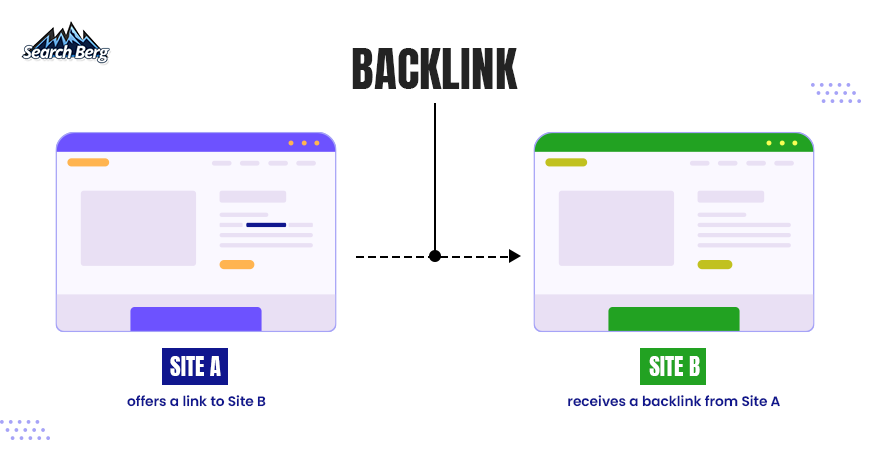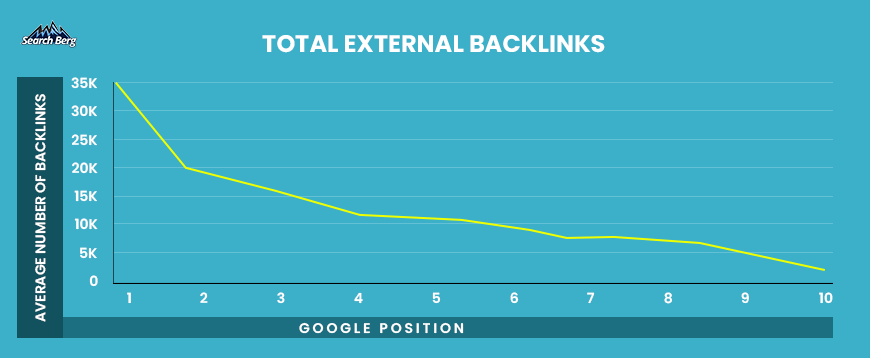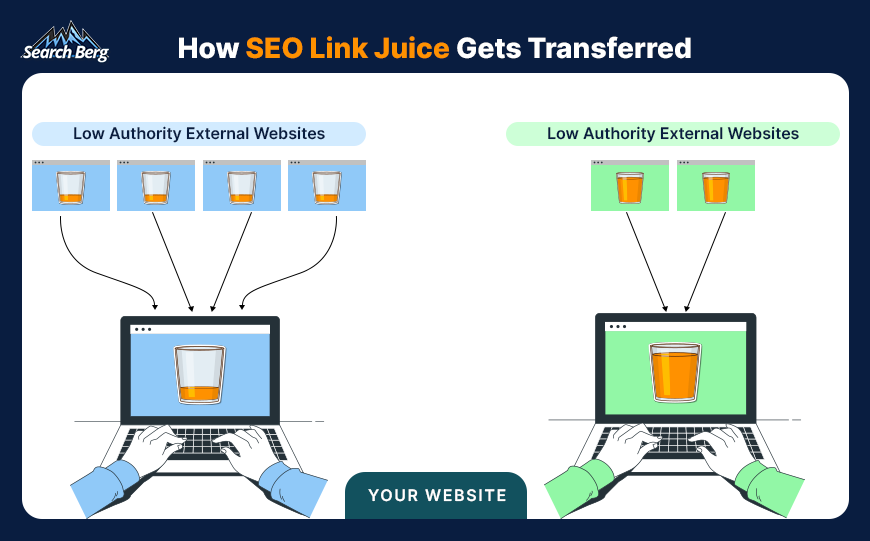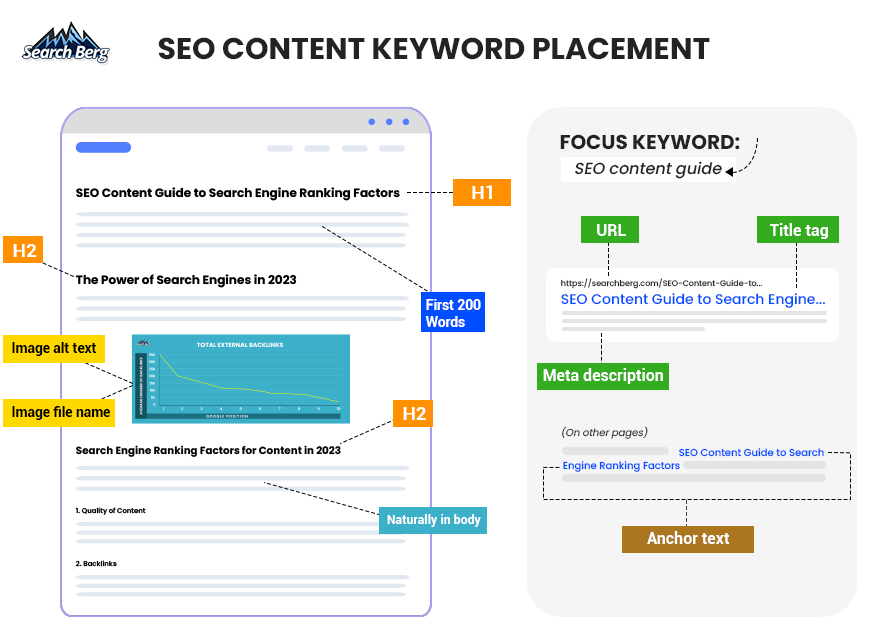SEO Content Guide to Search Engine Ranking Factors
The Power of Search Engines in 2023
Google processes 99,000+ searches every second. That number is quite simply mind-blowing.
In 2023, the power of Google cannot be underestimated. If you want to grow your audience, maximize sales, and increase brand recognition, Google should be your primary focus. High-ranking content will help you reel in a wider audience, make sweet sales, and grow your business the way you want.
Easier said than done, right? Writing content that’s a hit on Google isn’t exactly a piece of cake. It requires a lot of meticulous research, planning, and execution.
In this blog, we’ll help you do just that.
You can’t write high-ranking SEO content without understanding the top content Google ranking factors. Once you understand which conditions must be satisfied to make your way to the top SERPs, your rankings will start shaping up. Let’s take a closer look at critical content ranking factors that determine SERP success.
Take notes; we’ll cover the nitty-gritty of the Google content ranking landscape in 2023!
Search Engine Ranking Factors for Content in 2023
1. Quality of Content
Yes, you’ve heard this a million times. And yes, you’re tired of being told the same thing year in, year out. We may sound like a broken record, but quality is truly the ammo you need to succeed on Google SERPs.
@methode @JohnMu What’s the main important factor for rank a website in top search results on a particular phrase?
— Saroj Kumar (@sarojnishad) September 6, 2017
Of course, there are some pretty neat optimization tricks that will hike up your rankings, and we’ll get to those in just a bit. But quality is the single most critical factor that can make or break SERP performance. If your content lacks quality, forget it, there’s no way you can salvage your rankings.
In 2023, aim to write well-researched, cogent, well-structured, engaging, and value-added content that brings something new to the table. The basics should be covered: excellent grammar, syntax, punctuation, spelling, and vocabulary. On top of that, your content should reflect industry expertise yet be digestible enough for your audience.
If you run a B2B business, you have more room for complexity. But if you run a B2C business, you must master the art of positioning yourself as an expert without making people scratch their heads. When you hit all the right notes, Google will prioritize your content over hundreds and thousands of similar blogs and articles.
In 2023, Googlebot is smarter than ever. It’ll scan your content and determine its value within seconds. When you put quality first, you’ll pass the first test. Awesomeness, as John Mueller put it, will give you a miraculous boost on SERPs.
Recommended Read: How to Write a Blog That Ranks
2. Backlinks

Backlinks are hyperlinks on third-party websites that take users from the original page to your page. For example, if Forbes gives your blog a shoutout in their content, you’ll earn a backlink. Think of this like a vote of confidence. It’ll do wonders for your rankings and help you earn organic traffic. Backlinks from high-DA (domain authority) sites are a big content ranking factor.

Here’s how this works. Let’s say you want to buy a new product as a consumer. Once you’ve done basic research and decided which brand you’ll buy from, you’ll check out their customer reviews. What do other people have to say about the brand, their customer service, and the particular product you’re eyeing? Positive reviews will help you feel confident in finalizing the purchase. Negative comments will help you save yourself from a bad shopping experience.
Google uses pretty much the same logic to distinguish good content from bad content. When a high-DA site offers link juice to another website, they must be up to something good just by virtue of association. As a result, Google will rank the recipient site higher on SERPs.
As someone who’s creating content, your job is to generate more backlinks from high-DA businesses. Write guest posts, up your content quality and marketing game, pitch your content to reputable sites, and increase your PR efforts.
The more high-DA backlinks you generate, the better. Low-DA backlinks provide weak, insufficient link juice that doesn’t do much for rankings. Since Google doesn’t trust these sites to begin with, how will you benefit from their shoutout?
Keep this difference in mind:

Once you start building a large number of high-DA backlinks, you’ll be in for quite a ranking treat! Avoid using black hat link building strategies. Googlebot has become ultra-smart in 2023. If you try to bend the rules through unethical means, you’ll get penalized or even banned.
3. Keyword Usage
High-ranking content always has the right balance of high-volume keywords. However, many businesses put all their eggs in the keyword basket and wonder why their strategy keeps failing time and time again.
We’re mentioning keywords now instead of right in the beginning for a reason. Keywords are important, but churning out keyword-rich content that lacks quality will do nothing for your rankings. Quality always takes precedence over any other ranking factor.
John Mueller tweeted this for a reason:
If you mean it should be trivial to out-rank long-existing, legitimate businesses with some SEO tricks, then yes, that kind of SEO is long dead. It’s not enough to throw some keywords on a page to make it useful to users.
— John Mueller is mostly not here 🐀 (@JohnMu) October 11, 2022
In a nutshell, yes, keywords are important. But only after you’ve already taken care of quality. Start by researching the most relevant and high-ranking keywords for your industry. Keep other factors like audience segmentation and location in mind.
Your monthly keyword plan should include a complete set of relevant keywords ranked based on their search volume. Remember that your keyword plan will change every month as new industry trends, audience interests, events, holidays, and other momentous developments occur.
Let’s say you run a clothing store. If you’re creating content around Halloween, your keyword research plan should also include Halloween-themed keywords like “outfit ideas for Halloween”, “what to wear on Halloween 2023”, etc.
If you stick to the same keyword plan each month, you’ll fail to add time-sensitive keywords to the mix. Incorporate keywords into the title tag, Meta description, URL, H1 title, H2 headings, URL, and naturally throughout the body of the content (especially within the first 100 words). If you’re using anchor text, it should also be optimized with the highest-ranking product/service keyword in your local industry.
For example, if you run a healthcare clinic in New York and write a blog titled “X Effective Physical Therapy Modalities for Knee Pain”, your anchor text should include a keyword like “physical therapy services for knee pain in New York”. This specifies the treatment (physical therapy), the condition it helps with (knee pain), and the location of the practice (New York).
Catch out drift?
We also recommend optimizing images with image filename and alt text. Use this guide to get your SEO content keyword placement just right:

Recommended: A Beginner’s Guide to Optimizing Web Content for Better Reach and Conversions
Now, there are a few more tricks that can help you elevate your rankings. Page speed is a common technical ranking factor, but it also ties in with content. In 2023, web users simply don’t have the time to wait for their content to load. If your content doesn’t load naturally and immediately, you’ll end up with not-so-great rankings, a high bounce rate, and a low conversion rate.
Undo the damage by using an image compressor to maintain a low image file size of 70 to 100 KB. If you can go lower than this, even better! Additionally, save images as JPG, not PNG. These little measures will help you improve page speed and give your content a nice boost on SERPs. Keep the Core Web Vitals in mind:
- LCP (Largest Contentful Paint): The visible elements of your content should load within 2.5 seconds
- FID (First Input Delay): Your content pages should react within 100 milliseconds or less when a user clicks on a button, window, or any other on-page element that can be interacted with
- CLS (Cumulative Layout Shift):Your content pages should load predictably with no disruptive popups or erratic movements that can affect user experience
While these are technical ranking factors, they also apply to content pages. Check these boxes off the list, and your rankings will start shaping up.
4. Search Intent
Search intent is the intention a web user has when they make an online search. For example, if a web user looks up “DWI lawyers in LA”, their search intent (search purpose) is to find a great DWI lawyer in LA.
Chances are the web user recently got arrested for a DWI themselves or has a family member/friend who’s in trouble. Perhaps they’re taking precautionary measures and becoming informed about DWI law should they ever require assistance in the future.
You can tell a lot about a user’s thought process through their search query alone. If you want to rank higher on Google SERPs, ensure your content matches user search intent. In other words, create relevant content that gives web users what they’re looking for.
If a web user wants to buy a product/sign up for a service, provide more product/service-related insight. If they have a problem, solve it with your content. If they want to learn how to do something, show them how. And if they’re trying to better understand a topic, provide expertise.
Once you get a good grasp of the why behind a search query, you’ll be able to create masterful content that doesn’t miss the mark. The goal is to write something your audience is interested in, not something they couldn’t care less about. Once you start writing content, you’ll reach a point where you feel like you’ve covered everything. When this happens, you may start writing fluff and irrelevant content that further damages your rankings.
There’s no such thing as content saturation; you can always come up with new content ideas no matter how restrictive the landscape may appear at first. Keep your content relevant at all times. You can also diversify your content plan by branching out into different types of content like videos, how-to guides, infographics, listicles, long-form articles, cluster blogs, and so on.
Google has one simple goal: giving web users what they want. When you do the legwork for them, why wouldn’t Google reward you with better rankings? Once you master this technique, you’ll be surprised by just how much it benefits your business!
5. Mobile-Friendliness
If your content cannot be accessed by smartphone users, you’re leaving a big, big, big chunk of your audience unengaged. Mobile-friendliness is a prominent ranking factor. Google’s mobile-first indexing system means that your website’s mobile version will be used for indexing and ranking first.
Compared to desktop content pages, mobile content pages are considered more important and useful. Make sure your content can be easily accessed by smartphone users, no questions asked. This little switch will give you a significant boost in traffic.
All Aboard the Ranking Train!
In this blog, we walked you through the top content Google ranking factors for 2023. Now it’s time to start creating content that satisfies these requirements! We’re running the final few checks on the ranking train. Are you ready to board it? Let’s start the journey!
At Search Berg, we provide professional content writing services that help you rank higher on Google SERPs, generate more traffic, and secure your bottom line. We sprinkle our optimization dust on every piece of content to make it search engine-friendly.
Power-packed, optimized, and high-quality content is your golden ticket to greater online visibility and enviable sales. We have the tools, experience, and experience needed to help you get there!
We also provide full-scale SEO services to help your brand stand out on Google SERPs, make a great impression on web users, and hit the ground running. Our content specialists and SEO experts are ready to steer your brand in the right direction. Let’s begin!












